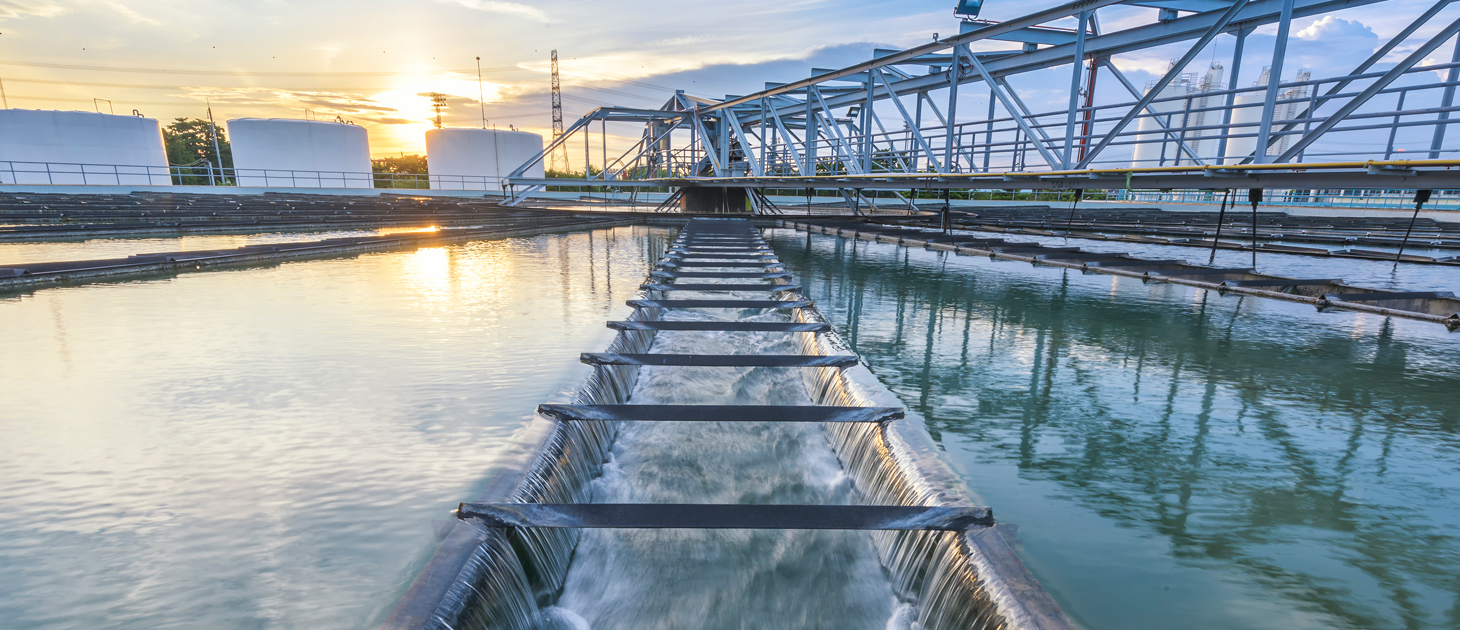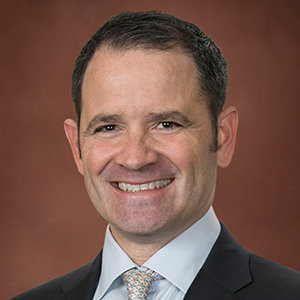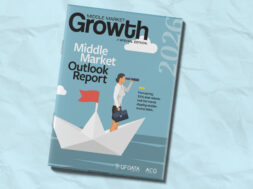A Qualified Opinion: Brendan Tierney on Trends & Opportunities in Water Management
The Raymond James managing director weighs in on water scarcity, new technology, and where PE investors fit in with respect to U.S. water management and infrastructure.

Brendan Tierney is a managing director in the industrials investment banking group at Raymond James, focusing on the $700 billion water industry. Tierney previously led the industrials practice at Janney Montgomery Scott, where he developed sector expertise in water and wastewater, flow control, test and instrumentation, specialty chemicals and niche manufacturing. He gained significant M&A experience working for Citigroup and Rabobank.
Q. How are issues of water quality impacting the way communities manage water?
With recent tragedies in Flint, Michigan, and Newark, New Jersey, the industry has become increasingly focused on improving the quality of water—not only what we drink, but also the quality of the wastewater that is eventually discharged back into the environment. The EPA regulates both of these water types, requiring companies to sufficiently invest in and manage their water systems to avoid not only tragedies and enforcement actions, but also public backlash when water quality is not maintained. Against this backdrop and faced with increasingly complex water management issues, more municipalities and corporations are looking to outsource the management of their water systems to third-party specialist operators.
Q. With over 70 percent of the Earth’s surface covered by water, why do we experience scarcity problems?

Surprisingly, less than 1 percent of the planet’s water is usable by humans—the rest is in the oceans, soil, ice caps and atmosphere. In addition, human populations and industrial operations are not always located near abundant usable water sources. As recent media attention on Cape Town, South Africa, highlights (Cape Town has been cited as potentially being the first major city to run out of water), water supplies at a given location are finite. This issue is exacerbated by the fact that water use has grown at more than twice the rate of population growth in the last century; as average income increases, water use per capita increases. The United Nations estimates this trend will result in two-thirds of the world’s population living under water-stressed conditions by 2025. The solutions to this problem involve conservation, as well as reuse and increasing the local supply of usable water.
Q. What opportunities are actionable for private equity firms?
Not surprisingly, the opportunities match well with the trends we’ve seen in the industry. We’ve seen a lot of interest in service businesses that help governments and corporations tackle water quality issues, including solutions that provide new or more efficient methods of monitoring and treatment. Similarly, we’ve noticed increased interest in reuse solutions, as well as a trend toward decentralized and/or modular systems. And finally, we’ve seen demand for all kinds of infrastructure plays—for long-term asset operators, as well as for technology and service providers. This is just to highlight a few areas. Generally, we have seen strong investor appetite for all kinds of water-related businesses.
Q. How is aging U.S. infrastructure affecting the cost of usable water?
According to the American Society of Civil Engineers, all U.S. infrastructure, with the exception of the rail networks, is in need of immediate investment to achieve adequacy. Alarmingly, some of the lowest grades—D and D+, respectively—were attributed to our nation’s water and wastewater systems. The study suggests that if investment in these conveyance systems isn’t increased significantly, the ripple effect might put at risk over $400 billion in U.S. GDP by 2020; 700,000 jobs would be endangered and over $500 billion in personal income would be at risk. When water systems are not properly maintained, the cost of failure can be five to 15 times more expensive than the cost of maintenance. This forces America’s municipalities into a vicious cycle: They are inefficiently spending scarce capital that is needed for investment and upkeep on maintenance and repairs. To break this cycle, progressive communities are turning to proactive asset management plans, leveraging smart solutions, including software, sensors and data analytics, to find breaks before they happen and to most efficiently repair and replace the portions of their system that truly need it most.
“We’ve seen a lot of interest in service businesses that help governments and corporations tackle water quality issues, including solutions that provide new or more efficient methods of monitoring and treatment.”
Q. With growing global concerns regarding water scarcity, what is being done to preserve the world’s most vital natural resource and address future needs?
The solutions to water scarcity are similar to those for managing other natural resources: Look for ways to use less, to more efficiently use the quantities needed, and attempt to increase the supply, if possible. Over a third of pumped water globally ends up being lost or unaccounted for, so municipalities are looking for ways to reduce this non-revenue water. Increasingly, this includes leveraging technology to more efficiently detect leaks and prevent water main breaks. As staggering as it sounds, home and office use only accounts for 10 percent of all water consumption; agriculture and industrial use account for 70 percent and 20 percent, respectively. Therefore, investment in improving the efficiency of irrigation, food production and energy production (80 percent of industrial water is related to energy production and cooling) would have large effects on the demand side. On the supply side, it really comes down to investing in solutions that make more wastewater reusable (such as for irrigation and cooling) and making more previously unusable water usable (such as through desalination or decentralized filtration).
Q: What significant events in 2017 have altered the water landscape? How will they affect the market for mergers and acquisitions?
Water and wastewater has largely been considered a “barbell” industry, with a small number of large, global industry consolidators and a fragmented base of smaller mom-and-pop companies. Over the past 12-18 months, there has been a material amount of movement among the global consolidators, including the acquisition of GE Water by Suez and Canadian pension fund manager Caisse de Depot et Placement du Quebec; the acquisitions of Sensus and Pure Technologies by water technology company Xylem; and the recent $575 million IPO of Evoqua Water Technologies.
In addition, private equity has entered the market enthusiastically, with more than three transactions valued above $1 billion: Advent’s acquisition of Culligan, CD&R’s acquisition of HD Supply’s Waterworks business, and CCMP and MSD Partners’ acquisition of Hayward Industries. In total, there were approximately 250 water-related M&A deals amounting to over $30 billion. With fewer consolidators and those with increased access to capital, we anticipate that the pace of mergers and acquisitions will accelerate and that the size threshold of consolidators will continue to creep down.
“Against this backdrop and faced with increasingly complex water management issues, more municipalities and corporations are looking to outsource the management of their water systems to third-party specialist operators.”
Q: How has the adoption of smart technologies, such as internet of things, equipment, software, etc., affected the water industry?
Historically, the water industry (particularly on the municipal side) has had a reputation for being reluctant to adopt new technologies. This phenomenon has largely been a factor of an aging municipal workforce as well as capital-constrained municipal budgets that don’t prioritize ROI.
In many cases, the efficiencies offered by newer technologies appear to be the most rational way to tackle the growing challenges with the resources at hand. This innovation is not occurring in just one, or a few, areas of the market. Across the entire hydrologic cycle there are examples of innovative solutions that frequently offer high productivity gains. They range from piping infrastructure—where there are autonomous robots connected to software suites that can map and analyze an entire city’s water system, and satellite-based leak-detection solutions—to wastewater systems that not only treat water but also create high-value outputs, such as energy and fertilizer. There are many new ideas creating growth opportunities.
This article originally appeared in the May/June 2018 issue of Middle Market Growth. Find it in the MMG archive.


